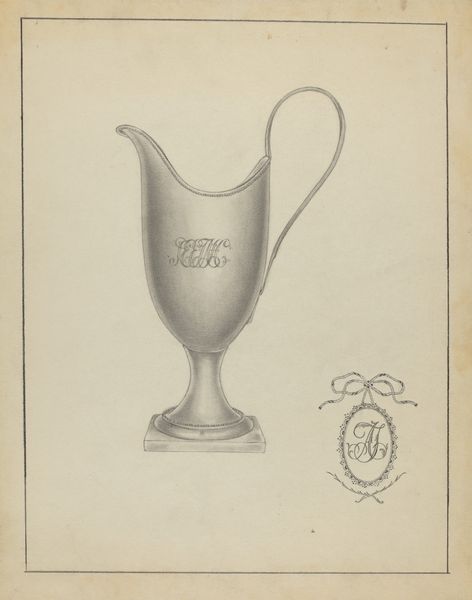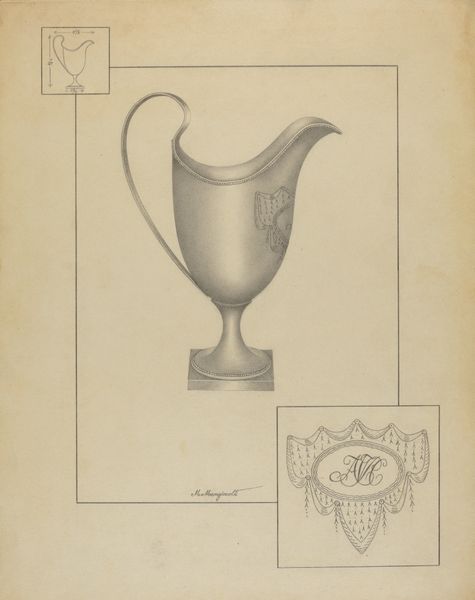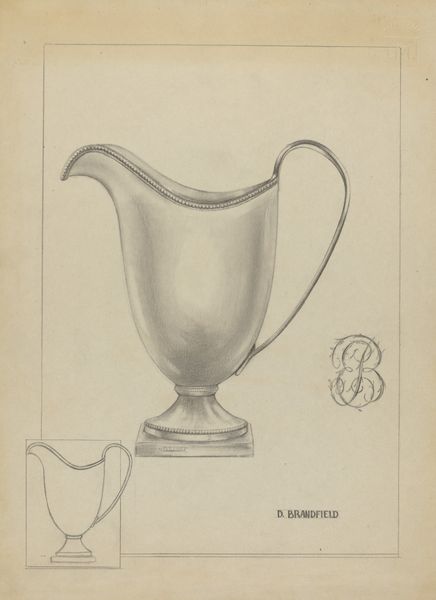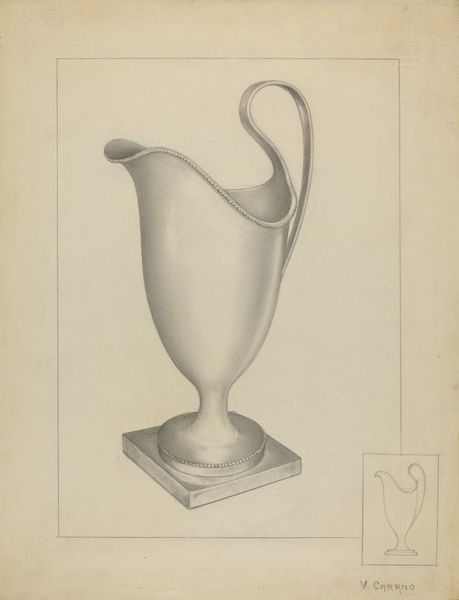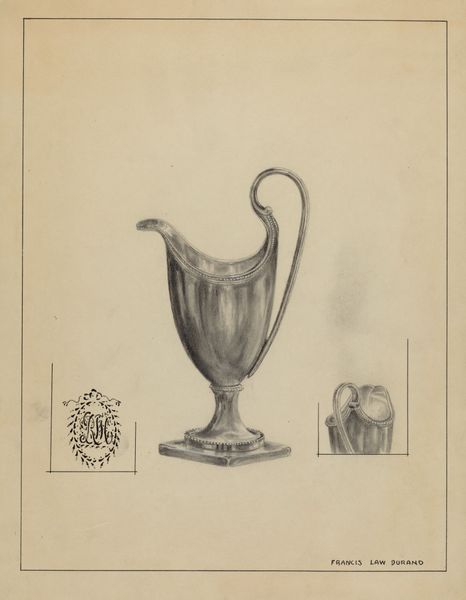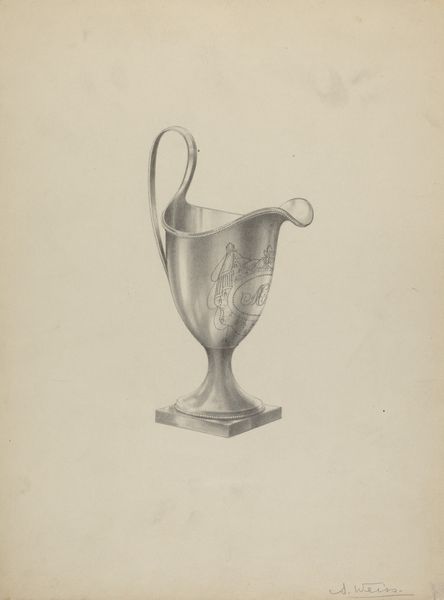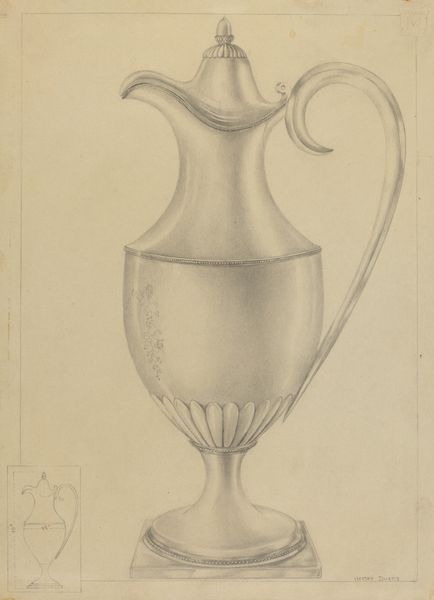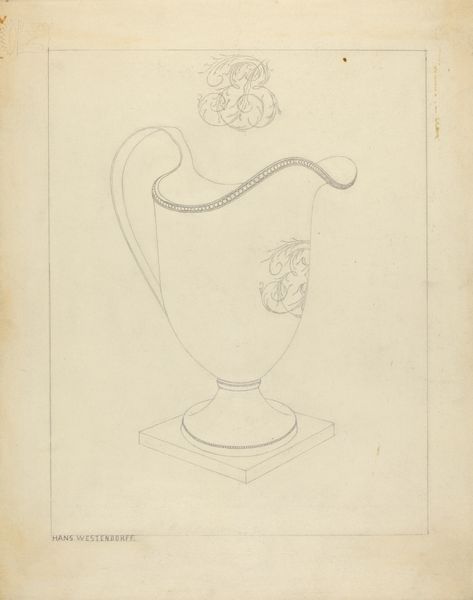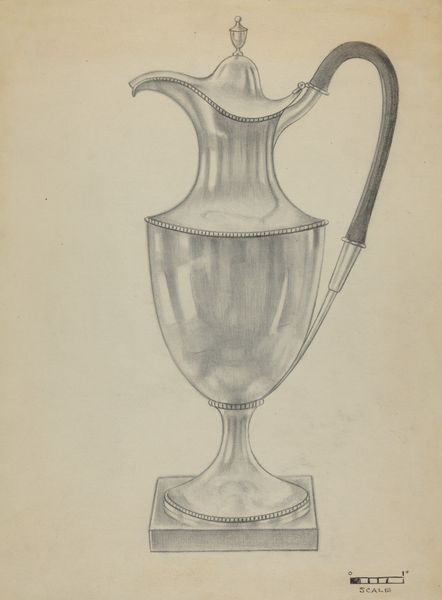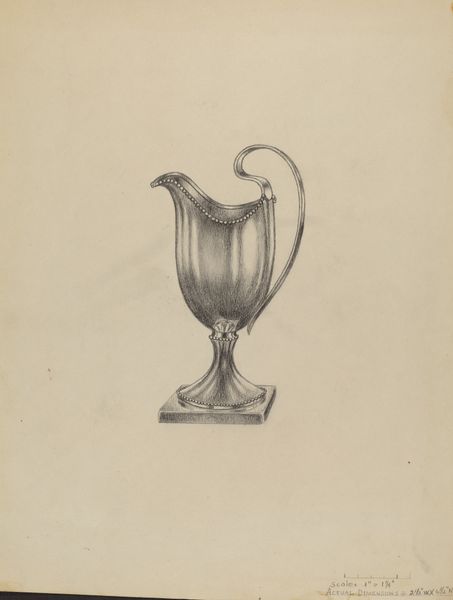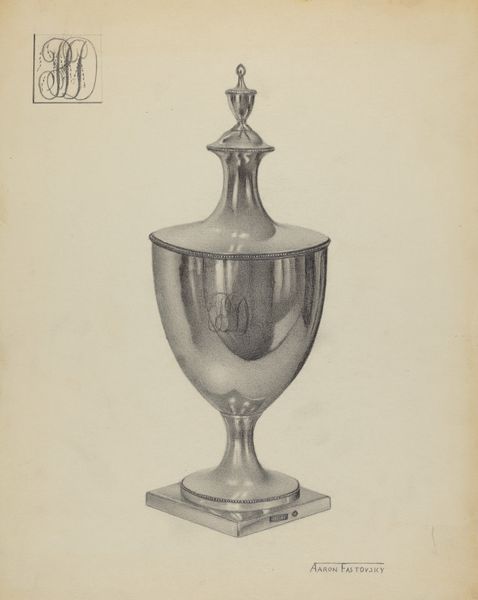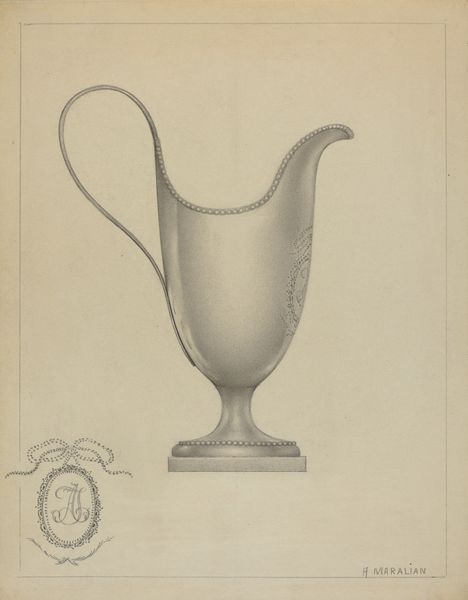
drawing, paper, pencil, graphite
#
drawing
#
paper
#
form
#
pencil
#
line
#
graphite
#
academic-art
#
realism
Dimensions: overall: 30 x 23 cm (11 13/16 x 9 1/16 in.) Original IAD Object: 3 1/2" high; 3 1/4" in diameter
Copyright: National Gallery of Art: CC0 1.0
Editor: This is Charlotte Winter's "Silver Pitcher," a drawing in graphite and pencil on paper, created sometime between 1935 and 1942. It feels very precise, almost like a technical drawing. What's your interpretation of this piece? Curator: It's interesting that you call it "precise." For me, that precision points to a very particular social positioning. During this period, art that meticulously depicted domestic objects often reflected a desire to assert order and control, especially during times of social and economic instability. Think about the ways in which the idealized home was presented in advertising and media at the time. Do you see a connection here? Editor: I hadn't thought of it that way, but it makes sense. The drawing is so careful, highlighting the object's form… almost celebrating it. The pitcher seems important. Curator: Exactly. Consider the labor involved in producing and maintaining such an object, and who had access to it. Silverware, then as now, signifies a certain level of affluence and social standing. It's not simply a functional item but a marker of identity. What does the inclusion of the monogram suggest to you? Editor: That it's personalized… belonging to someone specific? It makes it feel less generic, more tied to an individual or a family. Curator: Precisely. The monogram links the pitcher to a specific lineage, solidifying its role within a social structure. It moves beyond just representation and touches upon themes of ownership and heritage. Understanding these layers allows us to see the artwork not just as a drawing, but as a social document. Editor: I see it now. It's more than just a picture of a pitcher; it's about what the pitcher represents in society. I hadn't considered that at all! Curator: Art becomes far more interesting when we consider its connection to society, doesn't it?
Comments
No comments
Be the first to comment and join the conversation on the ultimate creative platform.
